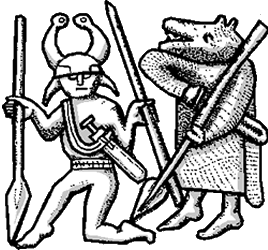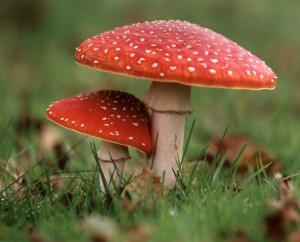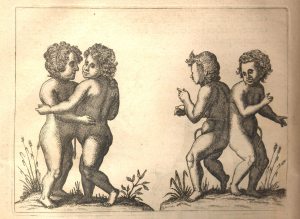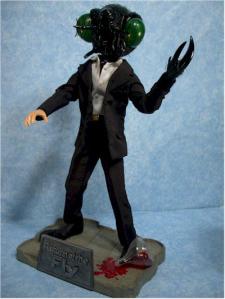
Verification on the Icelandic word for “fly-agaric” would be appreciated.

Amanita muscaria

2022 Archive of RENATURED, Marina Zurkow's Research Blog
ANIMALS, PEOPLE AND THOSE IN BETWEEN

Verification on the Icelandic word for “fly-agaric” would be appreciated.

There’s a magnifabulous online book of the 1585 edition of Oeuvresby Ambroise Paré, 16th century surgeon, considered the first humane surgeon to come out of the barber-surgeon tradition. He was also very interested in ‘monstrous’ forms.

The book’s at the National Library of Medicine
I found this site originally from a class at UCSB, Interspecies Collaborations, “a collaborative research space for documenting the progress of art projects made together with non-human animals and for posting resources relevant to such endeavors.”
I snagged this from The Atlantic, Andrew Solomon’s Daily Dish,
It’s a quote from Henry Beston’s The Outermost House:
“We need another and a wiser and perhaps a more mystical concept of animals. Remote from universal nature, and living by complicated artifice, man in civilization surveys the creature through the glass of his knowledge and sees thereby a feather magnified and the whole image in distortion. We patronize them for their incompleteness, for their tragic fate of having taken form so far below ourselves. And therein we err, and greatly err. For the animal shall not be measured by man. In a world older and more complete than ours they move finished and complete, gifted with extensions of the senses we have lost or never attained, living by voices we shall never hear. They are not brethren, they are not underlings; they are other nations, caught with ourselves in the net of life and time, fellow prisoners of the splendour and travail of the earth.”
There’s been much writing lately around removing the hierarchical imposition of humans and the rest of ’em. I’m 100% plus on this one. But referring to non-human animal species as “animal nations” is problematic. Not sure how I feel about creating statehood for any of us. There’s far too much overlap, hybridity, intertwingling for such discrete apportioning. And the more we think about our (constantly) renaturing world, the more stories like the ones below emerge, and can’t be considered “naturally” aberrant, or completely the product of human artifice:
My friend Abigail Simon found this one.
and this one is very strange… I love it when you “sigh,” birdie.
Granted these are animals in altered (mediated by humans, forced cohabitation) settings, I’m trying to do research on wild instances of interspecies cooperation/curiosity. There are plenty of examples of tolerance (watering holes, feeding grounds, lakes, rivers). But the line between coexistence and cooperation is interesting.
(Corey Wolfe, Michael Pollan, Erica Fudge, read like cornball-edly obvious fictional names, but their books are great)
At ITP I’m teaching a class called “Animals, People and Those in Between.”
This book, in addition to The Animals Reader, was super-useful, covering a lot of ground both on the history of people’s attitudes towards animals (from Aristotle, Descartes and Bentham to Peter Singer, and Tom Regan, Carol Adams, Yi-Fu Tuan et al), but also a survey on more radical and critical takes on the subject.
Animal is a clear and critical guide to ‘reading’ animals, and asking questions of everyone trafficking in animals, from the view points of science, fashion, advertising and philosophy. Fudge gives a great summary of Peter Singer’s work in chapter 2, “Real and Symbolic: Questions of Difference” as well as magic acts revealed in her treatment of Ham the NASA chimp, the His Master’s Voice dog, and PETA + fake fur.

…You can get the book on Amazon
This book’s part of the Focus on Contemporary Issues series by Reaktion Books, who has a great series called Animal. The series’ titles include Ant, Bear, Cockroach, Cat, Crow, Eel, Elephant... They’re written by a spectrum of eminent nature-culture writers. I loved Fly, which covered the natural and cultural histories of, yeah, flies. Author Stephen Connor describes the fly as one who “takes its pleasure promiscuously, restlessly, unswervably, unashamedly…. Each fly is king of his own country. He knows no laws or conventions…He has no work to do—no tyrannical instinct to obey… what freedom is like his?”
This is my kind of reasoned, academic, delicious anthropomorphism.

Zoontologies, the Question of the Animal is a collection of essays about “those nonhuman beings called animals (who) pose philosophical and ethical questions that go to the root not just of what we think but of who we are. Their presence asks: what happens when the Other can no longer safely be assumed to be human?”
These collections about “The Animal Question” have spawned and multiplied, many of their core contents get re-spun from book to book, so there is a lot of overlap from collection to collection, but also some real gems. My favorite in this book is by Alphonso Lingis, titled “Animal Body, Inhuman Face.” It’s an über-sexy, gorgeously written essay that extends (and exemplifies the often impossibly textual) Deleuze + Guattari’s Becoming-Animal theories, writ on bodies – on our bodies as ecosystems, our bodies as animal bodies.
Mathew Calarco’s review of Zoontologies writes that “Lingis’s essay overflows not with examples of “the animal” but with animals (understood broadly as living beings), in their multiplicity and heterogeneity: bacteria, sea anemones, rodents, rabbits, cats, cockatoos, jellyfish, whales, lions, wolves, and foxes, to name only a few…Lingis is also concerned to draw attention to the becomings-animal that are constantly at work at the very core of the human. It is especially during sex, Lingis argues, that human beings undergo such becomings: during orgasm, “our impulses, our passions, are returned to animal irresponsibility” (172); he notes further, in a passage that is sure to shock those readers who are confident that a sharp line can be drawn between the human and the animal in the realm of sex, that, “When we, in our so pregnant expression, make love with someone of our own species, we also make love with the horse and the calf, the kitten and cockatoo, the powdery moths and the lustful crickets””
Textually bestial?